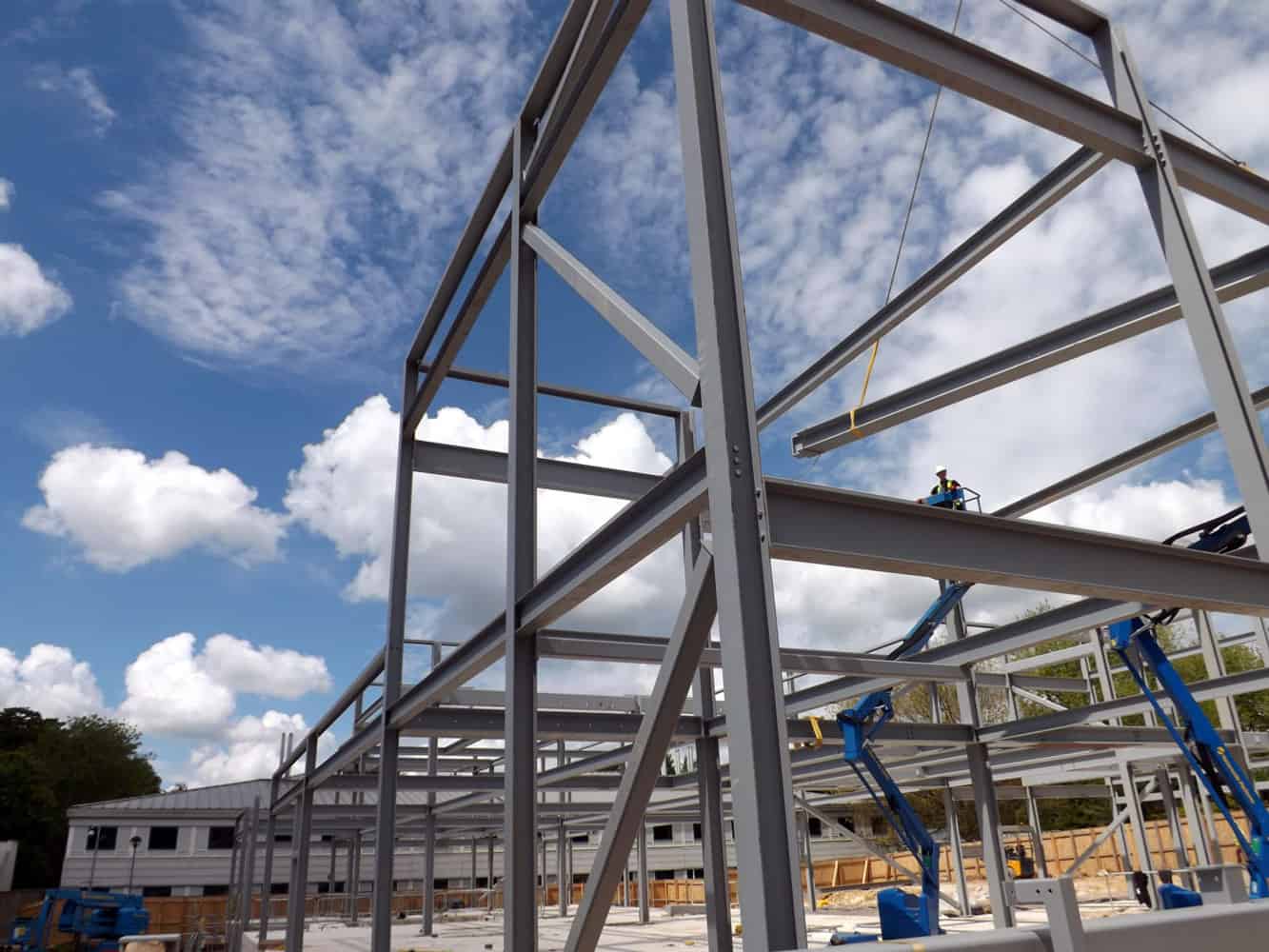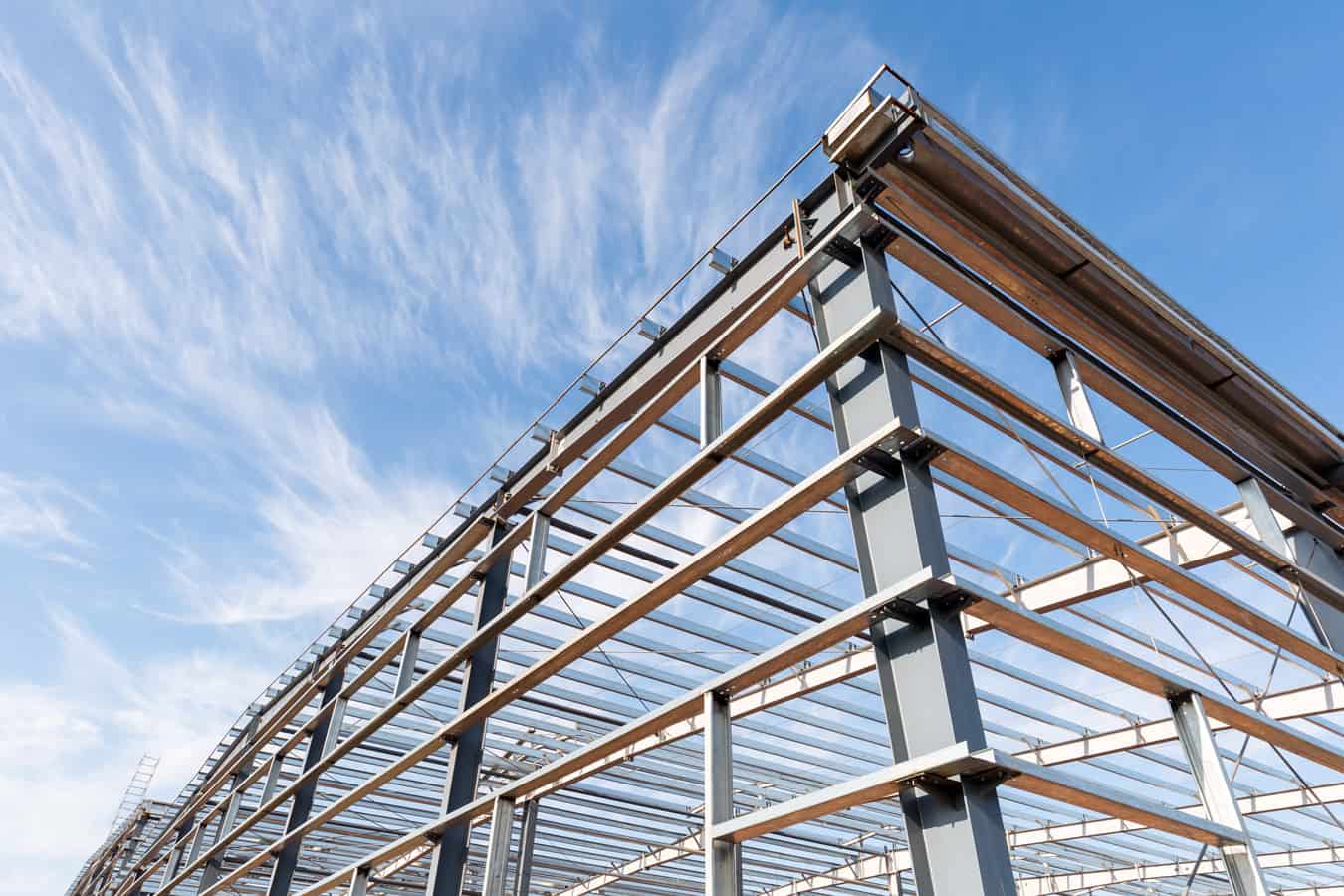If you have ever seen a steel I-beam, rod, bar, or plate, then you are acquainted with structural steel.
Save Up To 33% On Your Kit
While most of us have seen numerous structural steel components throughout our lives, you may not know exactly what structural steel is or what its advantages are.
In this guide, we will introduce you to the basics of structural steel fabrication, including how the process works and its applications and benefits.
That way, you will have a better understanding of the structural steel components that may arrive in your metal building kit.
What is Structural Steel?
Structural steel is any steel product resulting from the process called “structural steel fabrication.”
Those products have a wide range of uses. Not only do they go into buildings, but they also may be made into manufacturing equipment, vehicle parts, and more.
What are Some Common Shapes That are Fabricated?
Here are some structural steel fabricated parts you have probably encountered:
- I-beams
- HSS-shapes
- Z-shapes
- C-beams
- Tees
- Angles
- Rods
- Bars
- Plates
- Joists
- Various railway components
This process may also be used for custom metalwork.
The Structural Steel Fabrication Process

Here are the basic steps that go into fabricating steel:
1. Figure out what you need. If it is a part that does not already exist, you will need to create engineering blueprints.
2. Use the blueprints to create shop drawings for the fabrication team.
3. To keep track of your steel pieces from the start of the process through to the finish, they will be etched with numbers and locations.
4. Now the structural steel fabrication process begins in earnest. Through the use of laser cutters, water jets and plasma torches, the manufacturing team cuts the piece.
5. The next stage in the process is shaping the piece by bending it. For simple, fast bending jobs, the team can rely on a hammer. But if the work required to bend the piece to the right shape is too intensive for a hammer, machines can handle this step.
6. Once all components have been cut and bent into their final shapes, they can be welded into the final part you need. In some scenarios, fabricators may rely on rivets or adhesives instead of welding.
There may be some scenarios where the client will have to weld together the components themselves at their own worksite.
7. The manufacturing team may now finish the component. This might, for instance, involve powder coating for the steel to provide it with protection against the elements.
This step is also one the client might end up doing elsewhere.
8. Finally, the completed structural steel component is shipped to the client. It is now ready for use.
What happens next depends on what the components are and how the client plans to use them.
In some cases, they might need to be welded into the finished structure. But in the case of bolt-up metal buildings, this step is unnecessary.
What are the Benefits of Structural Steel Fabrication?
Now you have some insights into how fabrication in construction works. But what are its advantages? Let’s go over the specific benefits of structural steel components that are prefabricated for metal building kits.
- Components are ready to go when you receive them at your worksite. Any assembly or finishing work remaining will be fairly minimal. And in many cases, you can have the manufacturer take care of these tasks for you at the factory. At that point, all that is left for you to do is fit your components together with welding or bolts.
- Reduce materials, personnel and time needed to complete a project. With structural steel prefabricated in a factory, you do not need specialized tools, equipment and materials, nor the trained personnel to handle fabrication on-site. Your project will be less lengthy and complicated.
- Parts are manufactured with precision. A factory is a controlled environment. That is less true of a construction site. So, the more fabrication that takes place in a factory setting, the more consistent and precise the results tend to be. The result is a structure where the components fit together with fewer gaps or issues.
- Waste is reduced. Fabricating components on-site requires estimations of required materials. Getting the amounts right is challenging, so you may end up over-ordering. You are then stuck finding a way to get rid of the overage. This is the type of waste that does not occur with prefabricated components. As such, prefab steel is more environmentally-friendly and affordable.
- You can cut costs. Because every aspect of construction is faster, easier, and more efficient, your project costs will be considerably lower when you order fabricated parts.
- Structural steel components are recyclable. This is a general benefit of metal as a building material, but it bears repeating. You can recycle structural steel components if you no longer need them. They can also be fabricated from recycled metal to begin with.
- You do not need to do much work to maintain structural steel. Pests, weather and fire will not damage it the way they would components made of wood. Less time, work and money goes into long-term upkeep.
- Structural steel has excellent longevity. Quality fabricated parts can last through many decades of use in fantastic condition.
How is Structural Steel Fabrication Used?
Structural steel fabrication is used to make components in a broad range of industries.
For instance, the rails, beams, pipes and other components used in the process of mining are made this way.
So are many parts used in automobiles, ships, and aircraft.
Of course, at our website, the use we are most interested in is structural steel components for buildings.
If you order a metal building kit, the manufacturer will use the structural steel fabrication process to prepare the parts of your building.
Once they finish prefabricating the building components, they will ship them to you. You can then assemble them on-site.
Final Thoughts
Now you know the basics of structural steel fabrication: what it is, how it works, and some of its benefits.
If you want to cut costs and time building a home or commercial structure, you can order a metal building kit with prefabricated structural steel components.
To get started now, request a quote. We make it fast and easy for you to compare steel building kits and save.


